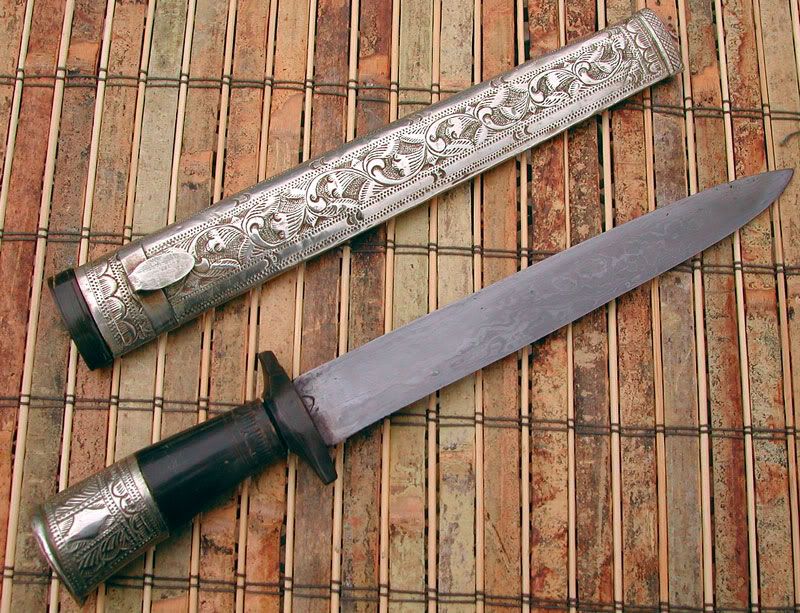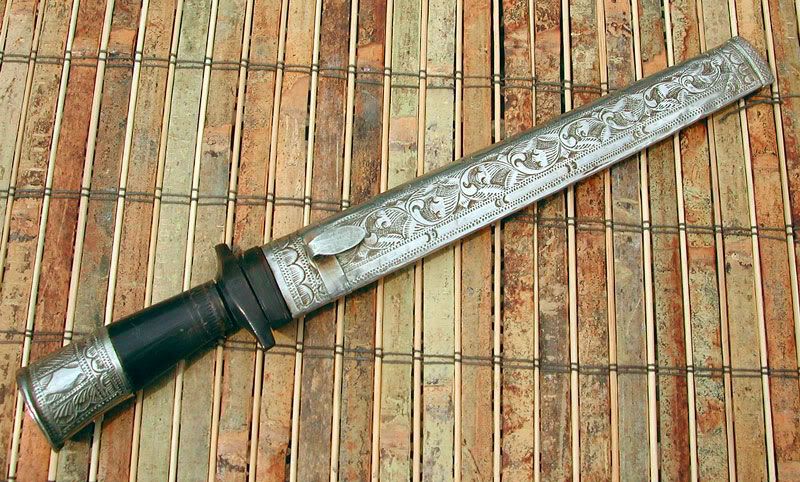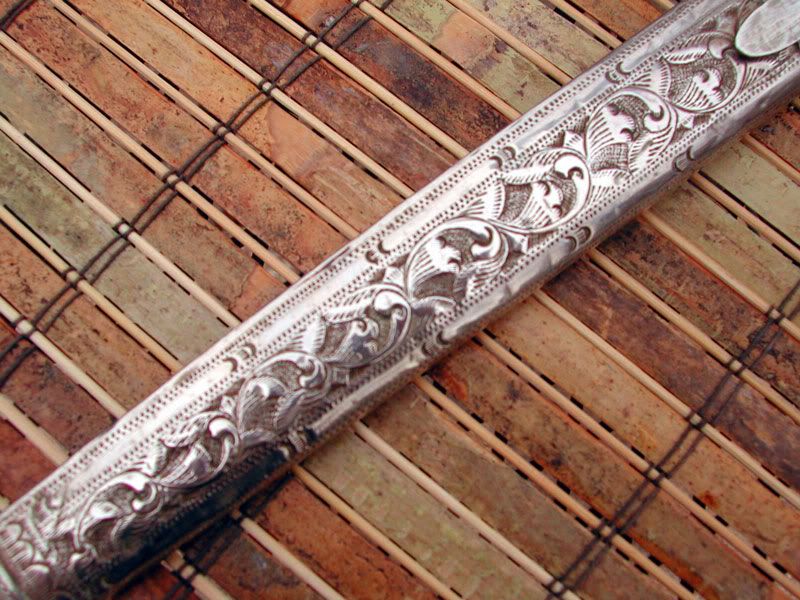
 |
|
|
#1 |
|
Member
Join Date: Dec 2004
Location: Kernersville, NC, USA
Posts: 793
|
Found this little dagger on Ebay. It's a little over 10" long, with what looks like a silver scabbard and hilt. The guard and hilt are horn. The blade was either poorly finished, or had been ground. It showed signs of pattern welding so I polished it (a lot) and etched it. It is indeed pattern welded. I don't have a feel for where it's from. Friends from here suggested either Bhutan or Indonesia, from the poor Ebay pics. I'd love your opinions with better pictures.
Thanks, Steve    
|
|
|

|
|
|
#2 |
|
(deceased)
Join Date: Dec 2004
Location: East Coast USA
Posts: 3,191
|
Steve
The hilt and silver work looks Indonesian to me. Whatever it is I really like it.  Compare silver work to this keris. Compare silver work to this keris.
Last edited by Lew; 23rd March 2011 at 11:10 PM. |
|
|

|
|
|
#3 |
|
Member
Join Date: Dec 2004
Location: Kernersville, NC, USA
Posts: 793
|
Here's the ebay picture.
|
|
|

|
|
|
#4 |
|
EAAF Staff
Join Date: Dec 2004
Location: Louisville, KY
Posts: 7,363
|
The okir on it could be modern Maranao from Marawi City. Or yes possibly modern Indonesia. Little hard to tell but I am leaning toward the Moro at the moment (I may change my mind, I may not
 ). ).
|
|
|

|
|
|
#5 |
|
(deceased)
Join Date: Feb 2005
Location: Centerville, Kansas
Posts: 2,196
|
Beautiful knife Steve. Like Jose I love things covered in silver. It looks like the hilt is carved where it meets the guard, could you post a close-up of that area? Again a very nice piece. Congratulations.
Robert |
|
|

|
|
|
#6 |
|
Member
Join Date: Feb 2007
Location: Kaboejoetan Galoenggoeng Mélben
Posts: 475
|
Hullo everybody!
Looking at the overall piece and if the actual blade were double-edged and about 20+something cm., I'd call it a 'peso teundeut' (loosely, stabbing-knife/push-knife). Part of the quintessential accoutrements of the Soenda warrior-class of yesteryear.  Best, |
|
|

|
|
|
#7 |
|
Member
Join Date: Jan 2005
Posts: 478
|
Nice work on the clean up! Dosen't even look like the same piece! Talk about a diamond in the rough.
|
|
|

|
|
|
#8 |
|
Member
Join Date: Jun 2006
Posts: 179
|
All I can say is: Nice find!
|
|
|

|
|
|
#9 |
|
Member
Join Date: Dec 2004
Location: Kernersville, NC, USA
Posts: 793
|
Thanks Gentlemen. So the votes so far are Indonesian, and Philippine.
 The blade was really roughly finished. I had to start with 150 grit sanding belts just to get the deep grinder gouges out of it. Went from there to 220, 45 micron,30 micron, then hand sanding. It's a pretty, if low contrast, pattern. Steve |
|
|

|
|
|
#10 |
|
Member
Join Date: Aug 2007
Location: Germany, Dortmund
Posts: 9,496
|
Hello Steve,
very nice dagger. Here a second vote for Indonesian. The complete style let me think direct that it is from there but frankly said i have never seen something similar.  Regards, Detlef |
|
|

|
|
|
#11 |
|
EAAF Staff
Join Date: Dec 2004
Location: Louisville, KY
Posts: 7,363
|
The style does look Indonesian. The okir could go either way.

|
|
|

|
 |
|
|